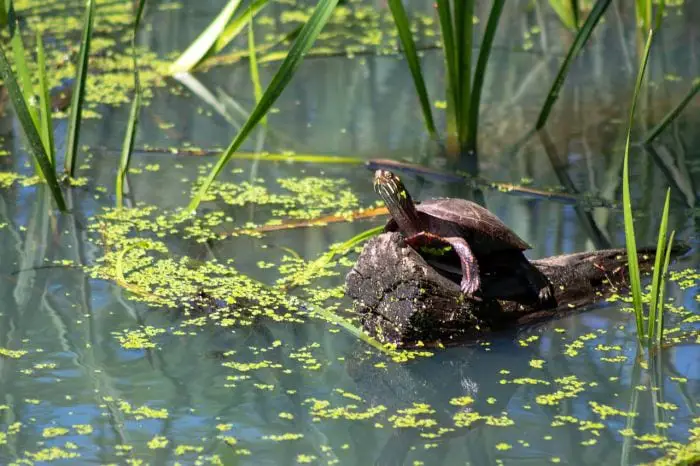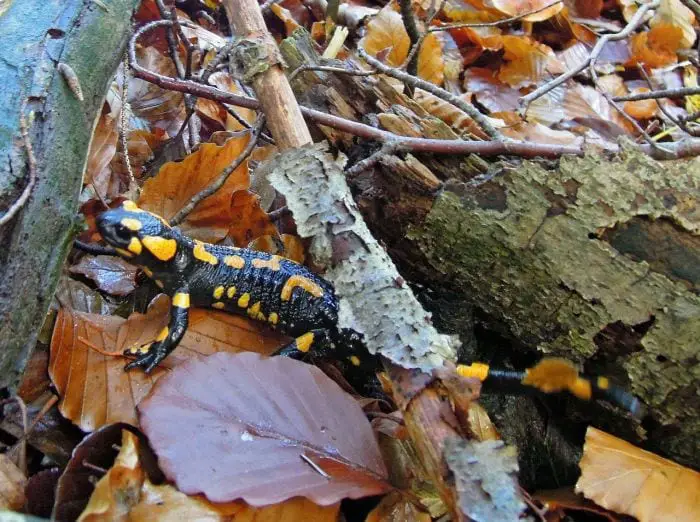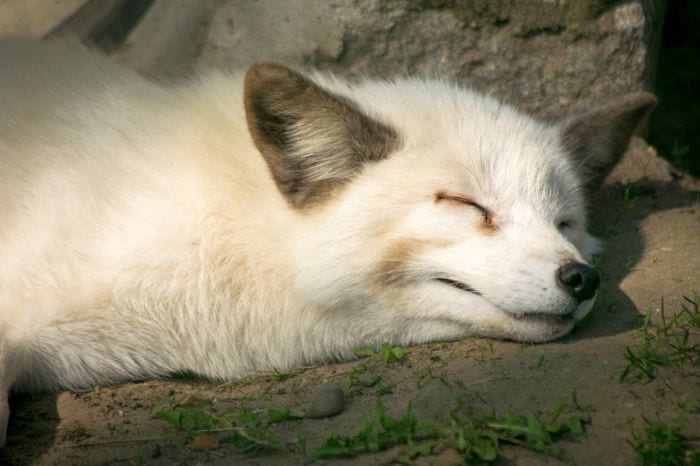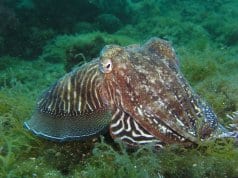When the weather is nice, and the temperatures are comfortable, most animals spend their time doing normal things, like finding food and avoiding predators.
But rain, snow, droughts and soaring temperatures can make it difficult for animals to remain active. Food can be difficult to find in these types of conditions, and extreme temperatures can make it dangerous for animals to leave their shelters.
When bad weather and inhospitable temperatures only last for a day or two, most animals just hang out in sheltered locations and wait until the conditions improve. They probably sleep a lot, but they will quickly wake up and start looking for food again once the bad weather passes.
But sometimes, bad weather conditions can last for a very long time.
For example, most parts of North America, Europe and Asia become very cold during the winter. The temperatures may remain very low for several months, and snow may blanket the ground for most of this time.
Some places also experience very long, hot and dry summers, which can make it hard for animals to find food and water.
Many animals have evolved special behaviors to help them survive these inhospitable periods. A few of the most common behaviors animals use to do so include hibernation, brumation, and aestivation.
We’ll talk about each in more detail below.
Hibernation
Some warm-blooded enter a deep state of sleep during the winter called hibernation.
Hibernation is a behavior some animals use to survive long, cold winters. Hibernating animals will retreat to a den or burrow once the temperatures start to fall, and they’ll go into a very deep sleep that lasts for most of the winter.

It is important to note that there is a big difference between a sleeping animal and a hibernating animal.
Hibernating animals exhibit a very drastic reduction in heart rate and body temperature. The heart rate of animals who are merely sleeping usually slows down a little, and their body temperature may drop a bit too, but these changes aren’t as drastic as they are in hibernating animals.
For example, a woodchuck’s heart usually beats about 80 times each minute during the spring, summer and fall. But once winter arrives and the woodchucks begin hibernating, their heart rate slows to only four or five beats per minute. Their teeth – which normally grow continuously – also stop growing while they’re hibernating.
Additionally, while sleeping animals will wake up if disturbed or the weather improves, hibernating animals are usually in such a deep state of sleep that they won’t wake up – even if their den becomes damaged.
This is an important distinction, as some warm-blooded animals hibernate throughout the winter, while others only go to sleep to conserve energy.
Bears, for example, sleep for most of the winter, but they don’t hibernate. If they get thirsty or the temperatures warm enough for them to look for food, they may exit their den for a while.
True hibernators, on the other hand, won’t wake up until the return of spring.
A few animals that hibernate include:
- Bats
- Woodchucks
- Ground squirrels
Brumation
Many cold-blooded animals enter a dormant state called brumation during the winter.
Brumation is very similar to hibernation – in fact, some people use the two terms interchangeably. However, hibernation refers to the deep sleep that some warm-blooded animals engage in during the winter, while the term brumation refers to the deep sleep that some cold-blooded animals experience during the winter.

The reason the difference is important is that the body temperature of cold-blooded animals changes when the air temperatures change.
If it is 30 degrees outside, the body temperature of a snake, turtle or frog will usually be about 30 degrees too. By contrast, warm-blooded animals don’t allow their body temperatures to fall until they begin hibernating.
Additionally, brumating animals may wake up when the weather warms – even if this happens during the middle of winter. So, this means that you may see a lizard sunning himself on a rock in the middle of January if the temperatures temporarily become warm enough for him to become active.
It is also pretty easy to wake up brumating animals, while hibernating animals are very difficult to wake.
A few animals that brumate include:
Aestivation
Some animals escape the hot and dry weather of summer by exhibiting a behavior known as aestivation.
Winter isn’t the only time of year in which the weather makes it difficult for animals to remain active. In some places, the summer temperatures may become so high that animals must remain in their shelter until cool weather returns.
Many of these places often experience droughts during the summer too, which makes it very hard for animals to find water.

Some animals respond to these uncomfortable temperatures by going into a deep state of sleep that’s somewhat similar to hibernating or brumating. However, when it occurs during the summer, it is called aestivation.
Aestivating animals may wake up and become active again if the temperatures drop or rain begins to fall. Typically, aestivation doesn’t last very long. Most animals that aestivate probably only do so for a few weeks, whereas some animals hibernate for up to nine months of the year.
Because amphibians require a lot of water to survive, they’re especially likely to aestivate when the weather becomes hot and dry.
A few animals that aestivate include:
- Cane toads
- Desert tortoises
- Spotted salamanders

Animals must adapt to the bad weather and climate conditions they face, or they won’t live to see the return of nice weather. Some species, including whitetail deer, bobcats, and wolves are able to remain active when the weather sours, but most will have to retreat to their shelter and wait for the weather to improve.
Hibernating, brumating and aestivating often help animals to survive these periods of time, and keep them healthy so they’re ready to become active once it is safe enough to do so.














![Red Angus Closeup of a beautiful Red Angus cowPhoto by: U.S. Department of Agriculture [pubic domain]https://creativecommons.org/licenses/by/2.0/](https://animals.net/wp-content/uploads/2020/03/Red-Angus-4-100x75.jpg)

